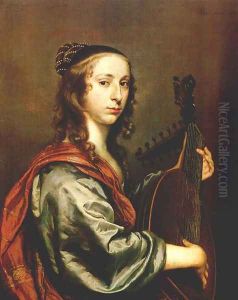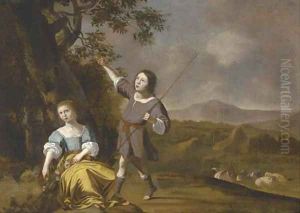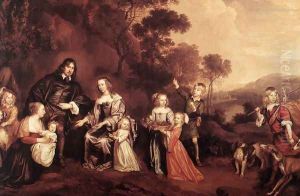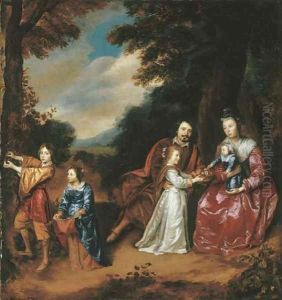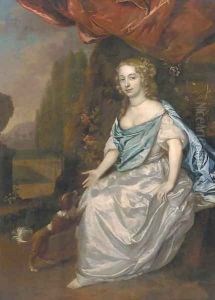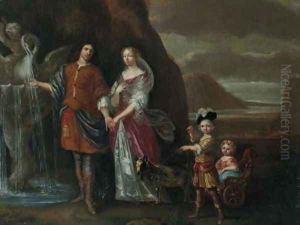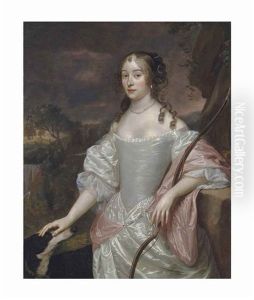Jan Mijtens Paintings
Jan Mijtens, also known as Johannes Mijtens or Mytens, was a Dutch Golden Age painter who was born in The Hague in the year 1614. His work primarily consisted of portraits, and he was well-known during his time for capturing the elegance and affluence of his sitters, often depicting them in lavish clothing and settings. Mijtens’ style was influenced by the earlier Dutch master Anthony van Dyck, and he was part of a family of artists; his uncle was the painter Isaac Mijtens.
Mijtens established himself in The Hague, where he became a member of the painter's confraternity, Confrerie Pictura, in 1636. His reputation grew, and he was patronized by the Dutch elite, including members of the court of the House of Orange. Although not much is documented about his training, it is believed that he was a pupil of his uncle Isaac Mijtens, who was an established painter in The Hague.
Despite his success as a portraitist, there are few records of Mijtens' life, and his work was for some time overshadowed by other Dutch masters of the era. However, his portraits are now recognized for their technical skill and the way they reflect the social and cultural milieu of the Dutch Republic in the 17th century. His works often featured a smooth painting technique, a bright palette, and attention to textures and materials, such as the intricate lace and satin fabrics worn by his subjects.
Jan Mijtens died in The Hague in 1670. His legacy continued through his descendants, with both his son and grandson, named Johannes Mijtens as well, becoming painters. Although not as famous as some of his contemporaries, Mijtens’ contribution to Dutch portraiture is appreciated by art historians and collectors for its elegance and portrayal of 17th-century Dutch society.
